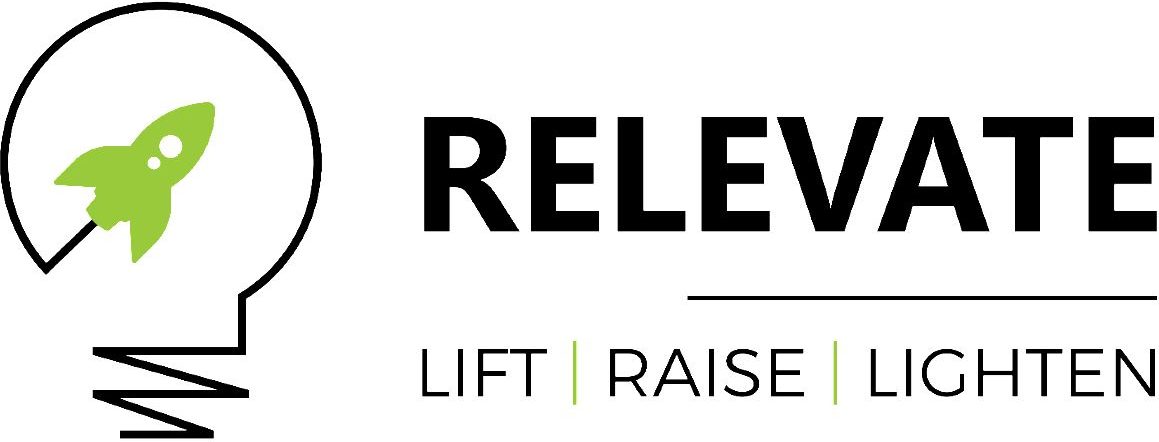Are You a Non-native English Speaker Who Has to Send Emails to Overseas Colleagues on a Regular Basis?
When English isn’t your first language, it may be difficult to send effective, conversational emails, but this article will give some useful pointers to help you enhance the overall quality of your emails and sound more like a native English speaker.
Because you are a non-native English speaker, you do not have to be bound by fear and uneasiness every time you press the send button. After you’ve used these basic tactics to improve your writing, you should be able to write emails to anybody with confidence (even those from native English-speaking countries like the Australia).
International Team Email Writing Tips
Most people will not tell you this, but writing a successful email starts even before you type the first word. The first step in writing a successful email is to change your thinking.
You’ll be able to compose great emails that communicate and convince when you’re in the right state of mind.
That makes sense… But how can you get into the right state of mind?
You internalise a few key email writing guidelines that you should apply to every email you compose. The greatest thing is that these guidelines apply to all forms of communication, not just email.
Rule #1 of Email Writing: Consider the Possibility of Receiving the Email You’re Writing
Have you ever gotten an email that was so disjointed that you couldn’t even finish reading it, much alone respond to it? Or did you add a wholly unrelated proposition?
Despite the fact that Ahrefs is an SEO tool, they got an email from a fishing firm.
One of the most common issues with email writing is a lack of empathy for the receiver. Most individuals will not evaluate if their email will be well-received by the other party before even composing it.
If you want your email to be taken seriously, you must first be able to sympathise with the receiver. Consider the individual to whom you are writing an email:
Why are you contacting this individual?
What do you desire from the person you’re emailing?
Is this the correct person to contact, given what I’m attempting to accomplish?
Of course, if you already know this individual, these questions are unnecessary. You can probably send a fast email and still receive a response.
However, if you’re writing an email to someone new or unfamiliar, consider these questions. Your responses will assist you in writing a more considered, cohesive email.
Rule #2 of Email Writing: Write Like You Talk
It’s natural to feel as though you should be more official in your email writing if you’re not a native English speaker.
This, however, leads in emails that are too professional and come off as uncomfortable or stiff. As an example:
Native English speakers write more casually; their work sounds more like one person conversing with another.
Here’s a little grammatical suggestion that will make you seem more native: Avoid using the passive voice while writing.
An active voice indicates that a subject is carrying out the verb’s action, as in: Marilyn sent the letter.
The passive voice, on the other hand, indicates that the verb is acted upon by the subject, as in: Marilyn sent the letter.
Rather of expressing your comments would be much welcomed, consider saying I would really value your input. Try mentioning I received your request instead of your request has been received.
Take note of how writing in an active voice makes you seem more human.
How to Write a Powerful Email
The Subject Heading
The subject line is often the first thing someone reads before deciding whether or not to open your email. This also implies that your email’s subject line determines whether it gets opened, ignored, or deleted.
Unfortunately, non-native English speakers are sometimes at a loss for what to put in the subject line.
Consider the following example:
This specific subject line (which is a real-life example) is ambiguous, oblique, and gives no indication of the email’s content.
As a consequence, Delete.
Subject lines are very crucial when communicating with someone for the first time. The receiver has no idea who you are and can only assess you based on your subject line.
Even if you’re sending emails inside your firm, it’s important to have a good subject line so your receiver knows what to anticipate. Your coworkers, like any busy individual, get a lot of email every day and would appreciate the additional effort of an informative subject line.
So, how do you craft an effective subject line?
Make your email clear, straightforward, and descriptive. Don’t be scared to use the whole subject line. Tell them what they may anticipate.
As you can see, there’s no need to use devious methods or clickbait headlines to get someone to read your email. Remember, you don’t want them to be duped into reading your email; you want them to read it and take action.
You want your email to evoke good emotions rather than anger and despair.
Here Are Some Nice Subject Line Examples:
I’ll be in town next Tuesday; are you available?
Introduction to Kevin Bacon FAQ – will take you 2 minutes – need response today Susan recommended I contact you
Begin With a Suitable Welcome
You should start the email with an acceptable greeting. The greeting consists of two parts: the salutation and the beginning statement.
Most non-native English speakers, presumably for fear of upsetting someone, use just one salutation: Dear [X]. Non-native English speakers will repeatedly utilise Dear [X] regardless of the situation.
The suitable greeting is determined by the circumstance. If you’re sending a formal email to a bank or government agency, you should begin with Dear [X].
If you’re writing an email to a friend or working in a casual setting, it’s completely OK to start with a Hi [name].
To assist you, here is a list of salutations you may use in your emails:
Hello, [First Name]
Mr./Ms. [Last Name],
[Name]
Good day/afternoon
After you’ve completed the greeting, it’s time to begin with a suitable starting statement. While the subject line impacts whether or not an email is opened, the first phrase determines whether or not the email is read all the way through.
The easiest way to accomplish this properly is to do research about the individual to whom you are writing. Learn about the interests of your receiver. Examine their social media accounts (for example, Facebook, LinkedIn, and so on), and if they write, read some of their blog articles.
Perform a Google search on their name to see if anything intriguing comes up. Visit their company’s website, read their About Us page, and learn about the projects they are working on or are interested in partnering on.
You may use this knowledge to craft an introductory phrase that establishes rapport. Demonstrate that you comprehend what they need and how you can assist them.
You may also demonstrate that you’re unique by showing that you’re interested in them and ready to go the additional mile to learn more about them. Demonstrating that you comprehend their problems contributes to the development of trust.
Of course, if you’re contacting a coworker or someone you know, this isn’t essential, but it’s still vital to provide some background so they understand what’s going on.
Quick tip: If you’re sending out sales emails and need ideas on what to say, check out Relevate‘s free email templates. You may use this tool to access a library of built-in templates for each step of the client journey.
Keep Your Message Brief and to the Point
Statista estimates that we send and receive around 269 billion emails every day.
If we averaged throughout the industrialised world (4 billion people), each individual would get around 68 emails every day!
This startling figure demonstrates one thing unequivocally: we spend a lot of time reading emails.
It is difficult to compose an email that gets opened, read, and acted upon. To guarantee that the email is professional, compassionate, and simple to read, you must put in the effort ahead.
You must be considerate of your readers’ time. While you may feel compelled to tell them everything in a single email, don’t. Nobody looks forwards to seeing a three-page essay in their email. Here’s one I recently received:
Ugh.
Instead, keep the email brief, to the point, and to the point. Concentrate on the most important and detailed facts.
Consider this: what is the ONE thing you want to do when the individual reads your email?
Make sure the email is worded in such a manner that it accomplishes the desired outcome.
When you need to provide a lot of information in an email, you should definitely recommend a phone conversation or a meeting instead.
Pro-Tip: Use this free meeting tool to plan meetings more quickly and avoid email back-and-forth.
Make Use of Standard Typefaces
If you use a non-English keyboard, your fonts may not appear correctly on the other person’s device.
Use standard typefaces if you want to seem to be a natural speaker. Some language typefaces have their own English font, which is a dead giveaway that the writer is not a native speaker:
Stick to what is safe to avoid a slew of technological troubles. Use web-safe email typefaces such as:
Arial\sCourier
Georgia\sHelvetica
Lucida Sans\sTahoma
TNR (Times New Roman)
MS Verdana Trebuchet
In truth, this is the precise list provided by Gmail:
This ensures that your receiver receives your message in a standard typeface regardless of the device or operating system they are using.
Compose Your Conclusion
When you’re through reading your email’s content, it’s time to shut it.
You don’t have to get creative with your closing; just keep it plain and clear.
So there’s nothing like this:
Instead, stick to tried-and-true concluding phrases, and you should be OK.
You may choose one of the following concluding lines from the list below:
Sincerely, yours
Sincerely,
Yours\sSincerely
Best wishes
Best
Regards, Warm Regards, Warm Regards, Warm Regards, Warm Regards,
Thank you for your kind wishes.
If you’re searching for something out of the usual and fancy, have a look at this collection of email sign-offs to try.
Plan Out Your Emails
Because you’re sending an overseas email, time zones are important.
Because of the volume of emails received, an email you send early in the morning may be buried at the bottom of your recipient’s inbox by the time he checks it. This might also imply that all of your time spent writing the email was in vain.
Set yourself up for success instead
Remember Rule Number One? Consider yourself in their shoes.
When are they most likely to be receptive? When will their inbox be cleaner?
It may be at lunchtime. It may be Sunday evening when they are getting ready for the week ahead. It may even be Friday; they’re undoubtedly in a good mood knowing the weekend is just around the corner.
Then, use our free email scheduling tool to guarantee that your emails are sent to the recipient’s inbox at the appropriate time.
Perform a Last Spell and Grammar Check
Don’t let yourself down in the last stretch.
Don’t spend all of your time composing the ideal message just to have it overlooked by the receiver due to spelling and grammatical problems.
After you’ve completed writing your email, copy and paste it into Microsoft Word or Google Docs to double-check the grammar, phrasing, and spelling. You may also use grammar checkers like Grammarly to automate the process while you’re writing. Perform a brief read-aloud to ensure you’re not writing clumsily or sounding like a robot. You must make your email text sound human.
Remember, you want the reader to concentrate on the content, not on your spelling mistakes.
Do you want more? With this free email marketing course, you’ll learn how to send the appropriate email to the right individual while also providing maximum value.








